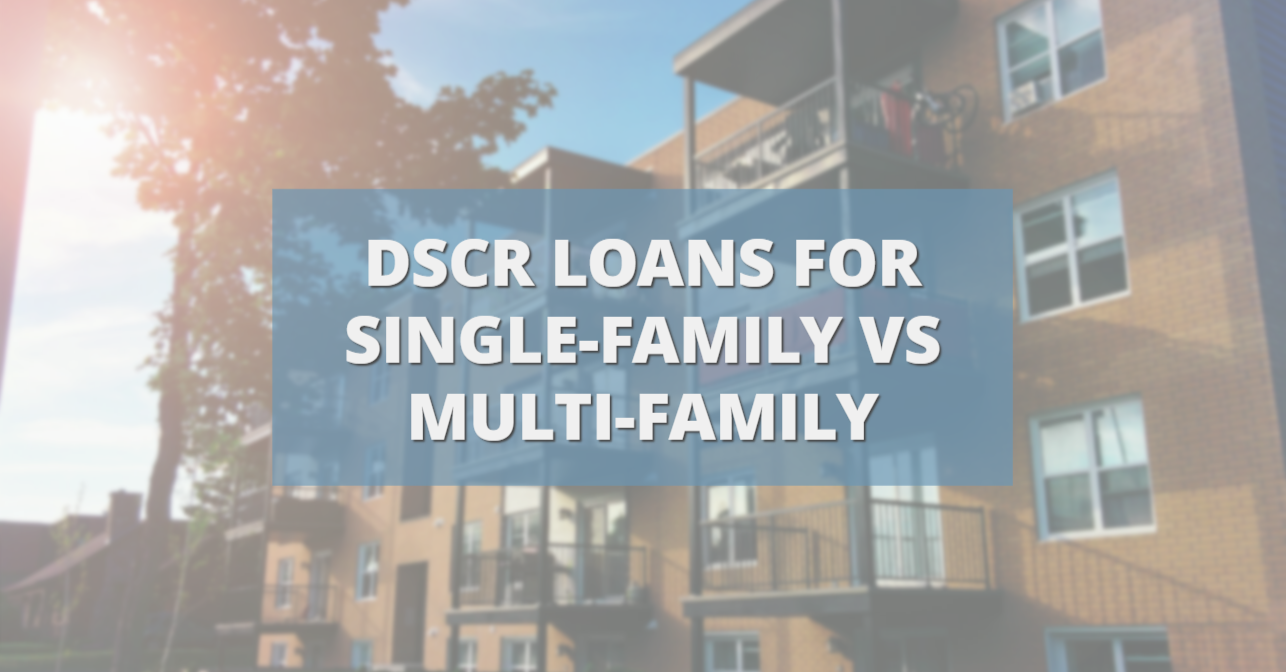DSCR Loans: Single-Family Units vs Multi-Units
Categories: Blog Posts
What is the difference in DSCR loans: single-family vs multi-units.
A DSCR loan is a product that does not rely on income from the borrower or borrowing entity. The borrower could be an individual, an LLC, or a partnership. Regardless of who is borrowing, the lender does not require their income information.
Instead, a DSCR loan depends on the income (rent) from the property.
Traditionally, DSCR loans are used for single-family properties. However, there are products available for multi-family units as well. Here are some of the similarities and differences.
Ratio Requirements for a DSCR Loan
Debt service coverage ratio is the rent divided by the expenses of a property. If the DSCR is 1, that means the income perfectly covers the expenses, breaking even.
A DSCR loan for commercial property will likely require at least a 1.2 DSCR. This would mean your income is 120% more than your expenses.
For instance, if your mortgage, interest, taxes, and insurance add up to $1,000 per month, your rent must be $1,200 per month to have a DSCR of 1.2.
Differences Between DSCR Loans in Single-Family vs Multi-Units
There are some differences between a typical DSCR and a DSCR-style product for multi-family and commercial properties.
- Loan size. The average DSCR loan is for single-family units, duplexes, and fourplexes, usually around $300k to $400k. A DSCR loan for commercial property, however, is a larger loan – typically anywhere between $1 million to $2 million.
- LTV. For a typical DSCR loan, you could get an LTV of 80-85%. Commercial DSCR loans max out at 75%.
- Terms. A DSCR loan for commercial property is amortized over 30 years or interest-only, like a traditional DSCR loan. They’re only fixed for a certain period, usually five, seven, or ten years.
Read the full article here.
Watch the video here:











